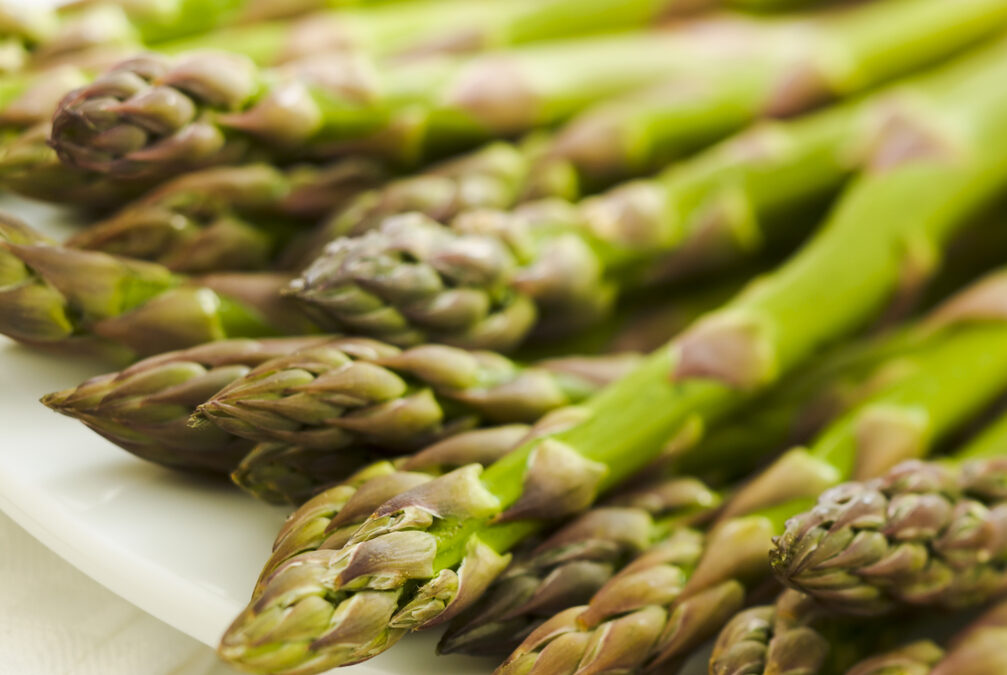You’ve heard about the power of superfoods such as kale and acai berries. These foods are packed with nutrients that provide a variety of value to your body. They’re cancer-preventing, fat-fighting and energy-boosting. Superfoods are great to eat, but you can find plenty of benefits in foods not making the trendy lists. The nutritional benefits of asparagus make it one of those foods.
Learn more about why Popeye should have eaten this green vegetable instead of spinach, and why you should consider picking up a bunch or two next time you go grocery shopping.
Asparagus Nutrition
The nutritional benefits of asparagus are impressive. First, it’s ranked as one of the top 20 vegetables on the Aggregate Nutrient Density Index. If you’re not familiar with it, this index ranks food according to the amount of vitamins and minerals it contains. Usually, when a food is ranked as high as asparagus, the food offers a lot of nutrients in exchange for a low number of calories.
Asparagus has one of the highest natural densities of folate. Folate is an essential component in a nutrition plan, and particularly important for infants and pregnant women. Folate helps cells and tissue grow and develop. It’s even been found to help prevent neural tube defects during pregnancy, such as spina bifida.
Beyond folate, asparagus also has high levels of vitamin K, an essential nutrient for bone health and antioxidants, which can help slow signs of aging externally on your skin and internally in your brain.
In one cup of asparagus, you can expect to absorb these nutritional components:
- 27 calories
- 3 grams of fiber
- 3 grams of protein
- 70 percent of your daily vitamin K
- 20 percent of your daily vitamin A
Asparagus brings in nutrients the body needs, but it has another benefit: It’s also a diuretic. It helps you urinate and pushes excess salts out of the body. This can be helpful for people who have high blood pressure or other heart-related diseases and for people with edema, which is when there’s an excess of watery fluid collecting in the cavities or tissues of the body.

Keep this in mind if you plan on having a salty or highly processed meal, like a summer picnic with hot dogs and hamburgers. Asparagus won’t change the calories or fat consumed with picnic favorites, but it can help flush out all the sodium from the meal.
How to Cook Asparagus
The only thing better than finding a great new super food to work into your nutrition plan is finding out how versatile it is. If you’re wondering how to cook asparagus, you have a few options:
- You don’t. You can eat asparagus raw and serve it with a dip such as hummus. You can also top it with a light and simple coating of olive oil or fresh lemon juice with pepper or a sprinkle of grated cheese.
- Baked asparagus. Baking asparagus can help keep its crunchy texture while softening it just a little. Add a coating of breadcrumbs for more texture and flavor.
- Boiled asparagus. For tender asparagus, boil it in water for 5 to 8 minutes. Then just drain, season with salt, pepper or other herbs and serve.
- Sautéd asparagus. Add a small amount of oil to a pan and cook cut-up asparagus in it. Your asparagus should cook quickly – about 2 to 4 minutes.
- Steamed asparagus. Steaming your asparagus will produce similar results to the boiling method: tender pieces of vegetable. With steaming, the stalks will be more crunchy. You can use a double boiler pot with salted water or any other steamer you have your kitchen.
- Grilled asparagus. Spring and summer are great times to use the grill to cook vegetables, including asparagus. Because asparagus is slender and could fall through the spaces in the grill, be sure to use a grill basket or a piece of aluminum foil to prevent lost vegetables.
Heating up this enterprising veggie makes it easier for your body to absorb all the nutritional benefits of asparagus. Any way you eat it, though, you’ll be getting important vitamins and minerals.
Asparagus Recipes
Asparagus is grown all over the United States. In North Carolina, asparagus ripens in April and May, although it could carry over into June, too. Other states such as Washington, California and Michigan produce the majority of asparagus in the United States, which is why you can find it in the supermarket year-round.
When shopping for asparagus, look for stalks with tightly closed tips, a bright green color and a firm texture. The ends should look freshly cut and not dried out or shriveled. If the color is fading, the asparagus isn’t as fresh as it could be and is already wilting.
Once you get the asparagus home, you can keep it fresh in your refrigerator for approximately four days. Remember to wrap the bottom of the bunch in a wet paper towel to keep it fresh. From there, you can integrate asparagus into a breakfast dish, into salads for lunch, or as a healthy side dish for dinner.
Sources:
http://www.womansday.com/food-recipes/food-drinks/tips/g2211/best-superfoods/
http://www.medicalnewstoday.com/articles/270805.php
https://www.nlm.nih.gov/medlineplus/ency/article/002408.htm
http://www.medicalnewstoday.com/articles/270805.php?page=2
http://www.bbcgoodfood.com/howto/guide/raw-vs-cooked
http://www.michiganasparagus.org/cookingtips/
http://www.medicinenet.com/edema/article.htm
http://www.pickyourown.org/NCharvestcalendar.htm
http://www.realsimple.com/food-recipes/cooking-tips-techniques/asparagus-tips

